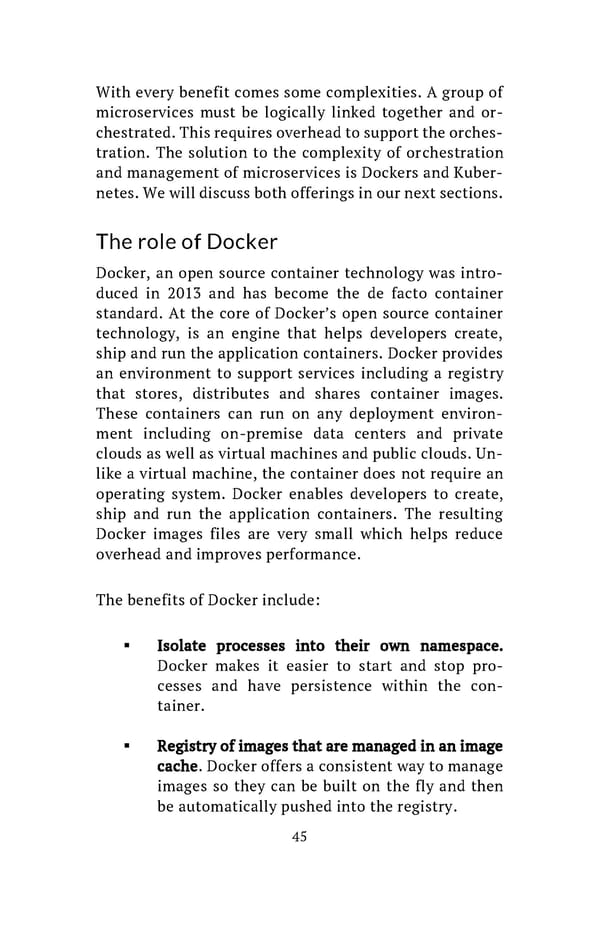With every benefit comes some complexities. A group of microservices must be logically linked together and or- chestrated. This requires overhead to support the orches- tration. The solution to the complexity of orchestration and management of microservices is Dockers and Kuber- netes. We will discuss both offerings in our next sections. The role of Docker Docker, an open source container technology was intro- duced in 2013 and has become the de facto container standard. At the core of Docker’s open source container technology, is an engine that helps developers create, ship and run the application containers. Docker provides an environment to support services including a registry that stores, distributes and shares container images. These containers can run on any deployment environ- ment including on-premise data centers and private clouds as well as virtual machines and public clouds. Un- like a virtual machine, the container does not require an operating system. Docker enables developers to create, ship and run the application containers. The resulting Docker images files are very small which helps reduce overhead and improves performance. The benefits of Docker include: ▪ Isolate processes into their own namespace. Docker makes it easier to start and stop pro- cesses and have persistence within the con- tainer. ▪ Registry of images that are managed in an image cache. Docker offers a consistent way to manage images so they can be built on the fly and then be automatically pushed into the registry. 45
 Building Cloud Native Apps Painlessly Page 50 Page 52
Building Cloud Native Apps Painlessly Page 50 Page 52